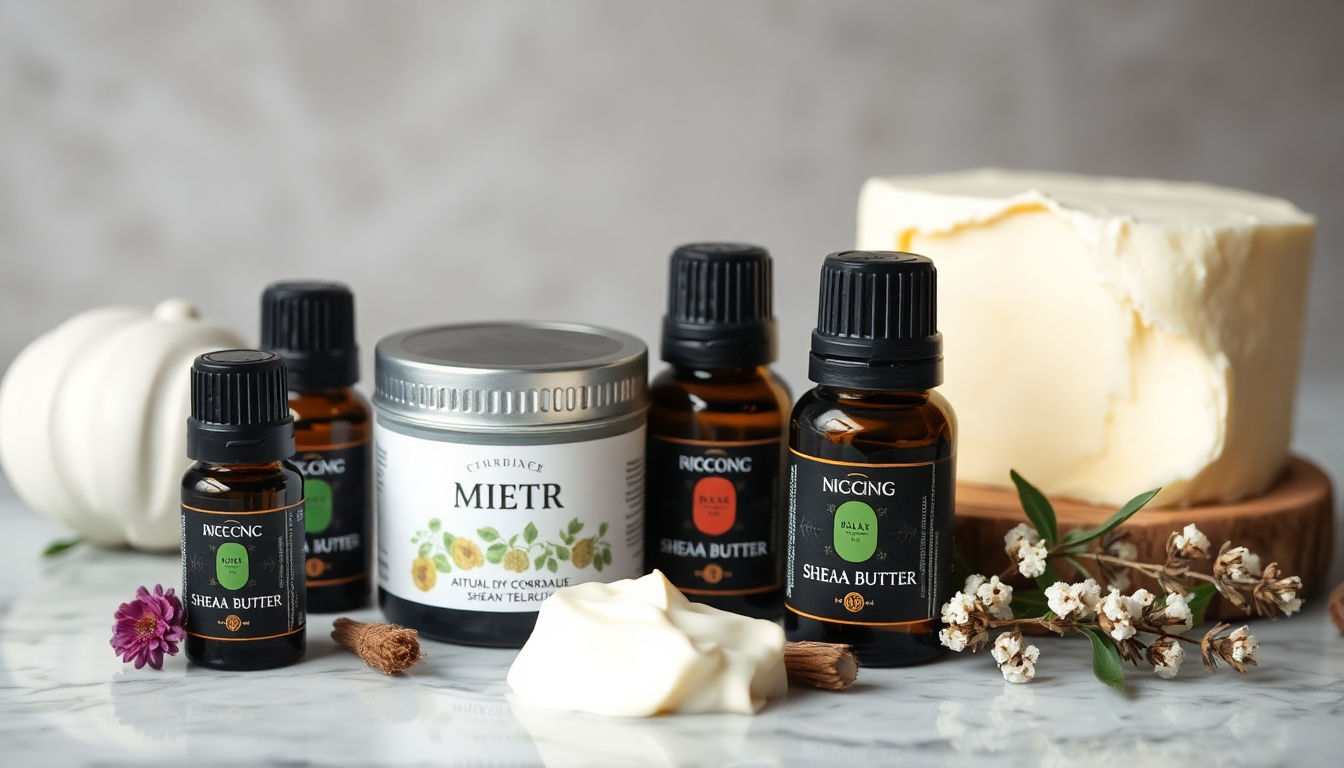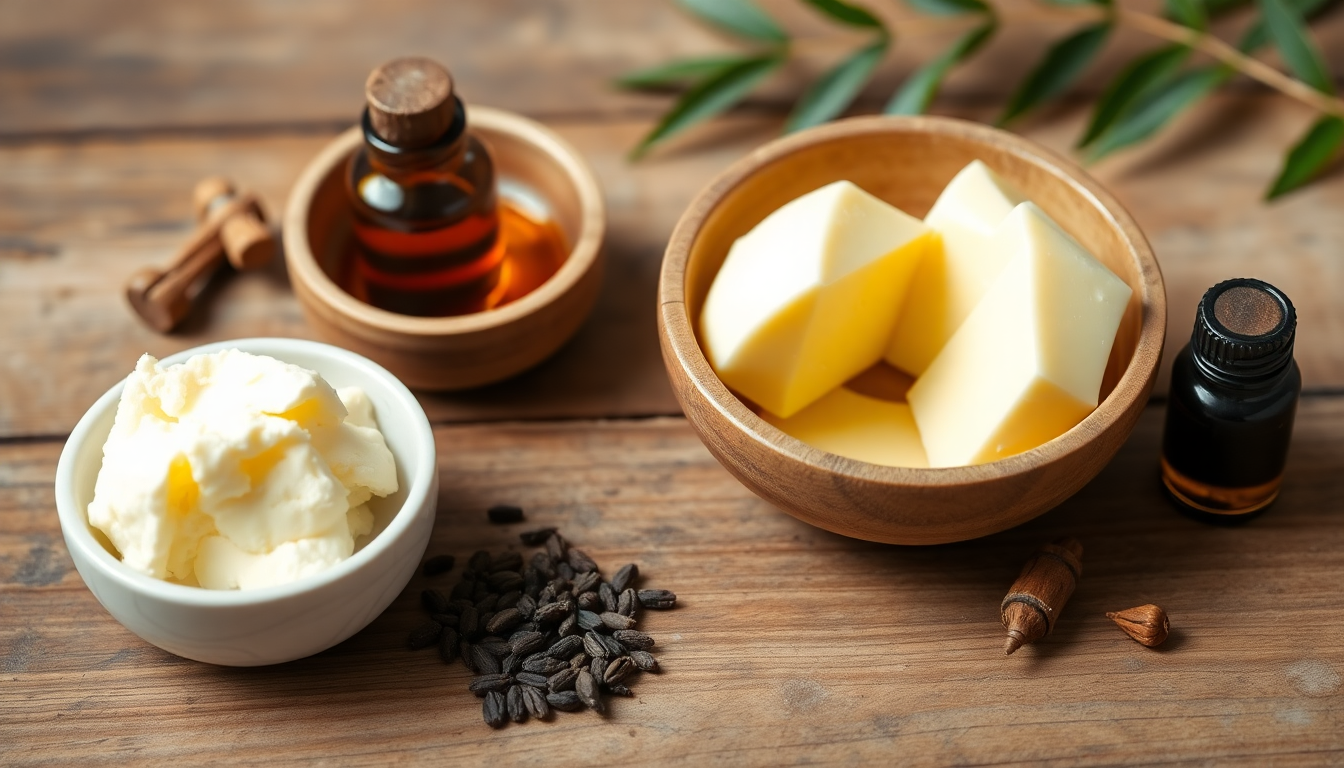Introduction
In 2025, achieving luminous skin is more attainable than ever, thanks to the power of natural ingredients like shea butter and essential oils. Exfoliation is a crucial step in any skincare routine, as it helps remove dead skin cells, promotes cell turnover, and reveals a fresh, glowing complexion. In this article, we’ll explore essential exfoliation strategies using shea butter and essential oils, ensuring your skin looks radiant all year round.
Why Exfoliation is Key for Luminous Skin
Exfoliation offers numerous benefits that contribute to a brighter and healthier complexion:
- Removes Dead Skin Cells: Regular exfoliation helps slough off dead skin, preventing dullness.
- Unclogs Pores: By removing impurities, exfoliation can help prevent breakouts and reduce the risk of acne.
- Enhances Product Absorption: Smooth skin allows serums and moisturizers to penetrate more effectively, maximizing their benefits.
- Stimulates Blood Circulation: This can lead to a more vibrant and youthful appearance as blood flow increases.
- Brightens Skin Tone: Exfoliation can help fade dark spots and hyperpigmentation, promoting a uniform skin tone.
The Benefits of Shea Butter for Exfoliation
Shea butter is a fantastic natural ingredient celebrated for its moisturizing and nourishing properties. Here’s why it’s excellent for exfoliation:
- Rich in Vitamins: Shea butter is packed with vitamins A, E, and F, which help improve skin health and provide antioxidant protection against free radicals.
- Moisturizing: It hydrates the skin while gently exfoliating, making it suitable for all skin types, including sensitive skin.
- Anti-Inflammatory: Its soothing properties can calm irritated skin, reducing redness and swelling, which is particularly beneficial for those with acne or rosacea.
- Natural Fatty Acids: The fatty acids in shea butter help to maintain skin elasticity and softness, contributing to a plump and youthful appearance.
- Non-Comedogenic: Shea butter does not clog pores, making it a safe option for those concerned about acne.
Essential Oils: The Perfect Exfoliation Partner
Pairing shea butter with essential oils enhances the exfoliation experience. Here are some essential oils that are particularly beneficial:
- Tea Tree Oil: Known for its antibacterial properties, it helps combat acne and promotes clear skin.
- Lavender Oil: Offers calming effects and promotes skin healing while providing a delightful aroma.
- Frankincense Oil: Helps reduce the appearance of scars and fine lines, making it ideal for mature skin.
- Rosemary Oil: Known for its ability to stimulate circulation, helping to improve the overall health and appearance of the skin.
- Geranium Oil: Balances oil production and can help with both oily and dry skin types, contributing to a balanced complexion.
How to Create Your Own Exfoliating Scrub
Crafting a homemade exfoliating scrub with shea butter and essential oils is simple and rewarding. Follow these steps:
- Gather Your Ingredients: You will need:
- 1/2 cup of shea butter
- 1 cup of sugar or sea salt (for exfoliation)
- 10-15 drops of your favorite essential oil
- Optional: A few drops of vitamin E oil for added nourishment
- Melt the Shea Butter: Gently heat the shea butter until it’s melted but not boiling. A double boiler works best to maintain a gentle heat.
- Mix Ingredients: Combine the melted shea butter with sugar or salt and essential oils in a bowl. Stir well to ensure all ingredients are evenly mixed.
- Let it Cool: Allow the mixture to cool and solidify slightly before using. You can store it in a clean jar with a lid for future use.
How to Use Your Exfoliating Scrub
For best results, follow these steps when using your homemade scrub:
- Start with clean, damp skin. Exfoliate after a shower for the best results.
- Take a small amount of the scrub and gently massage it onto your skin in circular motions, avoiding sensitive areas like your eyes.
- Focus on areas that may need extra care, like elbows, knees, and feet, as these areas often accumulate more dead skin.
- Rinse thoroughly with warm water and pat dry with a soft towel.
- Follow up with a nourishing moisturizer to lock in hydration. This step is crucial to keep your skin feeling soft and supple.
Frequency of Exfoliation
How often should you exfoliate? This largely depends on your skin type:
- Oily Skin: Exfoliating 2-3 times a week can help keep excess oil and breakouts at bay.
- Dry Skin: Limit exfoliation to once a week to avoid over-drying your skin.
- Sensitive Skin: Exfoliate once every two weeks, using a gentler scrub to prevent irritation.
- Normal/Combination Skin: Exfolating once a week is sufficient to maintain a healthy glow.
Additional Exfoliation Tips
To further enhance your exfoliation routine and achieve the best results, consider the following tips:
- Patch Test: Before using any new essential oils or scrubs, perform a patch test on a small area of skin to check for any adverse reactions.
- Stay Hydrated: Drinking plenty of water helps keep your skin hydrated from the inside out, enhancing the effects of exfoliation.
- Sun Protection: After exfoliating, your skin may be more sensitive to the sun. Always apply sunscreen to protect your skin from UV damage.
- Combine with Other Treatments: For enhanced results, consider using serums or masks that complement your exfoliation routine, targeting specific skin concerns.
Conclusion
Incorporating shea butter and essential oils into your exfoliation routine can illuminate your complexion and enhance your overall skincare regimen. By understanding the benefits of exfoliation and using these natural ingredients, you can achieve the luminous skin you desire in 2025. Remember, consistency is key—make exfoliation a regular part of your beauty routine, and enjoy the radiant results!
With the right approach to exfoliation, you can embrace the confidence that comes with healthy, glowing skin. Start your journey to luminosity today, and let your natural beauty shine through!




اترك تعليقًا
This site is protected by hCaptcha and the hCaptcha Privacy Policy and Terms of Service apply.